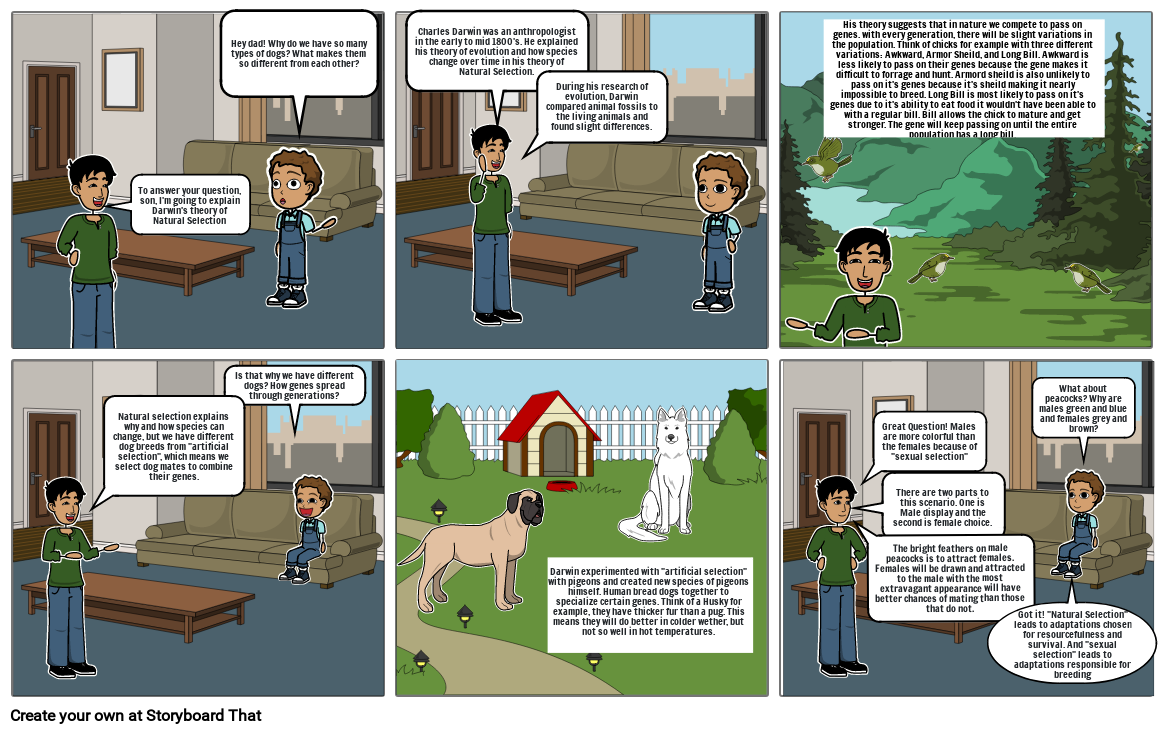Natural Selection Vs. Survival of the Fittest

Storyboard Text
- To answer your question, son, I'm going to explain Darwin's theory of Natural Selection
- Hey dad! Why do we have so many types of dogs? What makes them so different from each other?
- Charles Darwin was an anthropologist in the early to mid 1800's. He explained his theory of evolution and how species change over time in his theory of Natural Selection.
- During his research of evolution, Darwin compared animal fossils to the living animals and found slight differences.
- His theory suggests that in nature we compete to pass on genes. with every generation, there will be slight variations in the population. Think of chicks for example with three different variations: Awkward, Armor Sheild, and Long Bill. Awkward is less likely to pass on their genes because the gene makes it difficult to forrage and hunt. Armord sheild is also unlikely to pass on it's genes because it's sheild making it nearly impossible to breed. Long Bill is most likely to pass on it's genes due to it's ability to eat food it wouldn't have been able to with a regular bill. Bill allows the chick to mature and get stronger. The gene will keep passing on until the entire population has a long bill.
Over 30 Million Storyboards Created
No Downloads, No Credit Card, and No Login Needed to Try!
